
Hoi An Ancient Town: A Timeless Journey Through Vietnamese Heritage
Discover the enchanting Hoi An Ancient Town, a UNESCO World Heritage Site where history, culture, and charm come together in a unique Vietnamese experience.
Hoi An Ancient Town, nestled along the Thu Bon River in central Vietnam, is a mesmerizing blend of history, culture, and charm. This UNESCO World Heritage Site is renowned for its well-preserved architecture, dating back to the 15th to 19th centuries, which reflects a unique fusion of indigenous and foreign influences. As you stroll through its narrow streets, you'll encounter a captivating tapestry of ancient houses, pagodas, and assembly halls, each telling a story of the town's vibrant past. The town's picturesque waterfront is adorned with bright lanterns, which create a magical atmosphere as they illuminate the night. Hoi An's bustling markets offer a sensory feast, with vendors selling everything from handcrafted souvenirs to delicious street food. The town is also famous for its tailors, who can create custom-made clothing in just a few days, making it a paradise for fashion enthusiasts. Hoi An is not just about its historical allure; it also offers a variety of experiences for all types of travelers. Whether you're exploring the nearby beaches, taking a cooking class to learn the secrets of Vietnamese cuisine, or simply relaxing in one of its many charming cafes, Hoi An promises a memorable and enriching experience for all who visit.
Local tips in Hoi An Ancient Town
- Visit in the evening to see the lanterns light up the town, creating a magical atmosphere.
- Hire a bicycle to explore the town and nearby countryside at a leisurely pace.
- Don't miss the chance to have custom-made clothes tailored to your specifications.
- Take a boat ride along the Thu Bon River for a different perspective of the town.
- Try the local specialty, Cao Lau, a noodle dish unique to Hoi An.
Hoi An Ancient Town: A Timeless Journey Through Vietnamese Heritage
Hoi An Ancient Town, nestled along the Thu Bon River in central Vietnam, is a mesmerizing blend of history, culture, and charm. This UNESCO World Heritage Site is renowned for its well-preserved architecture, dating back to the 15th to 19th centuries, which reflects a unique fusion of indigenous and foreign influences. As you stroll through its narrow streets, you'll encounter a captivating tapestry of ancient houses, pagodas, and assembly halls, each telling a story of the town's vibrant past. The town's picturesque waterfront is adorned with bright lanterns, which create a magical atmosphere as they illuminate the night. Hoi An's bustling markets offer a sensory feast, with vendors selling everything from handcrafted souvenirs to delicious street food. The town is also famous for its tailors, who can create custom-made clothing in just a few days, making it a paradise for fashion enthusiasts. Hoi An is not just about its historical allure; it also offers a variety of experiences for all types of travelers. Whether you're exploring the nearby beaches, taking a cooking class to learn the secrets of Vietnamese cuisine, or simply relaxing in one of its many charming cafes, Hoi An promises a memorable and enriching experience for all who visit.
Iconic landmarks you can’t miss
Old House of Tan Ky
Explore the Old House of Tan Ky in Hoi An, Vietnam - A heritage building showcasing the rich cultural tapestry of this ancient port town.
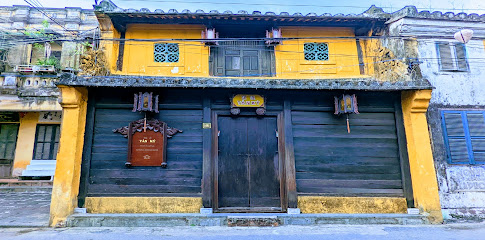
Phố Đi Bộ Hội An
Experience the authentic taste of Vietnam at Phở Địa Bổ, a must-visit culinary destination in Hôi An that highlights the country's rich food culture.

The Old House of Phung Hung
Experience the rich heritage of Hoi An at The Old House of Phung Hung, where history meets culture in a beautifully preserved setting.

Ancient House
Discover the Ancient House in Hoi An, a stunning blend of history, culture, and traditional architecture that enchants every visitor.

Hoi An ancient town
Explore the enchanting streets of Hoi An Ancient Town, a UNESCO World Heritage site, rich in history and culture, perfect for unforgettable experiences.

Quan Thang Ancient House
Explore the rich history and stunning architecture of Quan Thang Ancient House, a cultural gem in Hoi An, Vietnam.

Phố cổ Hội An
Explore Hội An Ancient Town, a UNESCO World Heritage site, where rich history meets vibrant culture in Vietnam's most charming destination.

Old town Lantern boat
Experience the magic of Hoi An's Old Town Lantern Boat, where the shimmering lights and serene waters create an unforgettable cultural journey.

Hoi An Yellow Wall
Experience the historical charm of Hoi An Yellow Wall, a vibrant landmark that reflects the rich cultural heritage of Vietnam's stunning Hoi An.

Hoi An prison relic
Explore the poignant history of the Hoi An Prison Relic, a striking reminder of Vietnam's colonial past and the struggle for freedom.

Unmissable attractions to see
Hội An Night Market
Discover the vibrant Hôi An Night Market, a cultural gem filled with local cuisine, unique handicrafts, and an enchanting evening atmosphere.

Thanh Ha Pottery Village, Hoi An
Experience the timeless tradition of pottery making at Thanh Ha Pottery Village in Hoi An, where art, culture, and community come alive.

Old House of Tan Ky
Discover the Old House of Tan Ky in Hoi An, a heritage gem that reflects the city's rich historical tapestry and architectural beauty.

The Old House of Phung Hung
Discover the rich history and architectural beauty of The Old House of Phung Hung, a must-visit destination in Hoi An, Vietnam.

Phố cổ Hội An
Discover the enchanting streets of Hoi An Ancient Town, a UNESCO World Heritage site filled with vibrant culture, rich history, and exquisite cuisine.

Cẩm Phô Communal House / Cẩm Phô Temple
Explore the rich heritage and architectural beauty of Cẩm Phô Communal House in Hội An, Vietnam, a cultural gem steeped in history.

Hoi An Village Experience
Explore the essence of Vietnam's culture at Hoi An Village Experience, where tradition meets tranquility in a stunning natural setting.

Essential places to dine
Restaurant & Cafe Tuấn Rich Flavor of Hoi An Vietnamese Familly Restaurant
Experience authentic Vietnamese cuisine at Tuấn Rich Flavor in Hội An - where every meal tells a story.
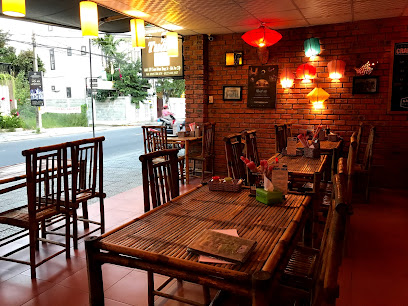
Nhan's kitchen
Experience authentic Vietnamese flavors at Nhan's Kitchen in Hoi An - where every dish tells a story.

MIX Greek Restaurant Hoi An
Discover authentic Greek flavors at MIX Greek Restaurant in Hoi An's charming Old Town - where every dish tells a story.

Firefly Hoi An | Restaurant & Bar
Discover the heart of Vietnamese cuisine at Firefly Hoi An – where every dish tells a story.

Orivy Hoi An Local Food Restaurant
Experience authentic Vietnamese cuisine at Orivy Hoi An Local Food Restaurant - a hidden gem in the heart of Hội An.

Madam Kieu Vietnamese Restaurant
Savor authentic Vietnamese flavors at Madam Kieu Restaurant in Hội An – where every dish tells a story.

Chops Hoi An
Discover the vibrant flavors of Chops Hoi An – where delicious burgers meet live music in the heart of Vietnam's enchanting Old Town.

Hai Cafe Courtyard BBQ & Restaurant in Hoi An Old Town
Discover authentic Vietnamese flavors at Hai Cafe Courtyard BBQ & Restaurant in the historic charm of Hoi An Old Town.

SECRET GARDEN HOIAN
Experience tranquility and authentic Vietnamese flavors at Secret Garden Hoian – a hidden culinary gem in Hội An's lush surroundings.

HOME Hoi An - HOME Vietnamese Restaurant
Experience the rich flavors of Vietnam at HOME Hoi An - a dining haven in the heart of Ancient Town.

Markets, malls and hidden boutiques
Sunday in Hoi An
Explore the enchanting Sunday in Hoi An, a gift shop showcasing unique handicrafts and souvenirs that embody the rich culture of Vietnam.
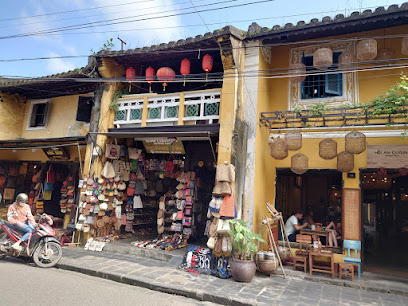
Reaching Out Arts & Crafts
Explore the artistry of Vietnam at Reaching Out Arts & Crafts, a gift shop that supports local artisans and preserves cultural heritage in Hội An.
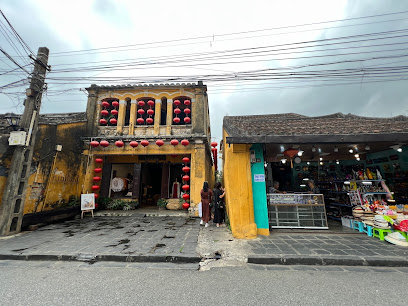
Souvenir Hoi An Shop
Explore the vibrant Souvenir Hoi An Shop, where unique handcrafted gifts and local artifacts await to enrich your travel experience in Vietnam.
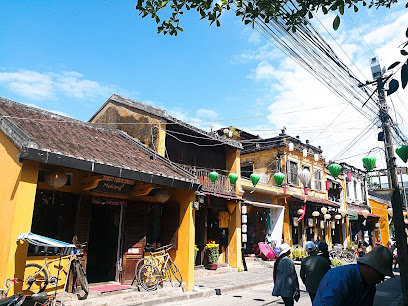
Mountain’s Color Hoi An- Handmade Shop
Explore Mountain’s Color Hoi An, a vibrant gift shop offering exquisite handmade souvenirs reflecting Vietnam's rich culture and artistry.

Hoi An Specialty Shop (THU CANH) - 가을과자점
Experience the sweet flavors of Vietnam at Hoi An Specialty Shop (THU CANH), a charming confectionery store offering traditional delights.

Unique Hoi An Fashion
Explore Unique Hoi An Fashion for bespoke tailoring, exquisite fabrics, and vibrant accessories in the heart of Vietnam's historic town.
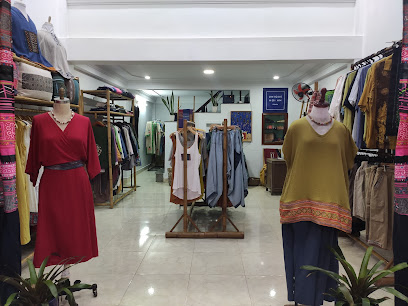
Station 93 - Trạm đặc sản Hội An
Discover the charm of Hội An at Station 93, a gift shop filled with unique handcrafted souvenirs and local delicacies that capture the essence of Vietnam.

Hoi An Old Town (Shopping Street)
Discover the enchanting Hoi An Old Town Shopping Street, where history, culture, and shopping converge in a vibrant Vietnamese setting.
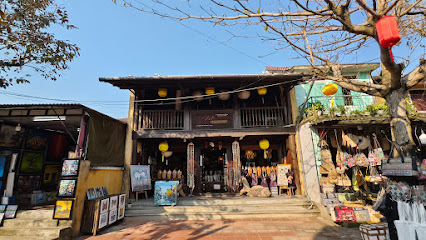
Quầy Lưu Niệm Hội An
Discover unique souvenirs and local handicrafts at Quầy Lưu Niệm Hội An in the heart of Vietnam's charming Old Town.

Mr Vietnamese outlet Hoi an
Explore Mr Vietnamese Outlet in Hoi An for authentic Vietnamese gifts and handicrafts, capturing the culture and artistry of Vietnam.

Essential bars & hidden hideouts
Hair of the dog bar Hoi An
Discover the nightlife of Hoi An at Hair of the Dog Bar, where affordable drinks and live entertainment create unforgettable memories.

The Shamrock Irish Pub Hoi An
Discover the charm of The Shamrock Irish Pub in Hoi An, where authentic Irish cuisine meets vibrant live music and a welcoming atmosphere.

Market Bar - Market Terrace
Experience the vibrant nightlife of Hội An at Market Bar - Market Terrace, where unique cocktails meet a cozy atmosphere for an unforgettable evening.

Tiger Tiger Bar
Experience the vibrant nightlife at Tiger Tiger Bar in Hội An, where locals and tourists come together for great drinks and unforgettable moments.

Why Not Bar
Experience Hoi An's vibrant nightlife at Why Not Bar, where craft cocktails and lively entertainment await every visitor.

Sky bar Hoi An (rastabar)
Experience the vibrant nightlife at Sky Bar Hoi An, featuring stunning views, gourmet cocktails, and entertainment in the heart of Vietnam.

Bob Marley Bar Hoian
Dive into the vibrant atmosphere of Bob Marley Bar Hoian, where delicious grilled dishes and live music create an unforgettable experience in the heart of Hoi An.

Hoi An T/T Cocktail Bar, Coffee & Antiques
Discover the enchanting ambiance of Hoi An T/T Cocktail Bar, where exquisite cocktails meet a treasure trove of antiques in the heart of Vietnam's Old Town.

Guitar Hawaii Coffee Bar Restaurant Hoi An
Experience the perfect blend of coffee culture and local cuisine at Guitar Hawaii Coffee Bar Restaurant in Hoi An, Vietnam.

KoFi Hoi An - Cocktail bar
Discover KoFi Hoi An, a vibrant cocktail bar and cafe in the heart of Hoi An, serving unique drinks with local flair.

Local Phrases
-
- HelloXin chào
[sin chow] - GoodbyeTạm biệt
[tam byet] - YesCó
[gaw] - NoKhông
[kohng] - Please/You're welcomeXin vui lòng
[sin vwee long] - Thank youCám ơn
[kahm uhn] - Excuse me/SorryXin lỗi
[sin loy] - How are you?Bạn khỏe không?
[buhn khwee kohng?] - Fine. And you?Khỏe. Còn bạn?
[khwee. kawn buhn?] - Do you speak English?Bạn có nói tiếng Anh không?
[buhn gaw noy tyeng ang kohng?] - I don't understandTôi không hiểu
[toy kohng hee-uh]
- HelloXin chào
-
- I'd like to see the menu, pleaseCho xem menu, vui lòng
[cho sem menu, vwee long] - I don't eat meatTôi không ăn thịt
[toy kohng an tit] - Cheers!Dô!
[daw] - I would like to pay, pleaseTôi muốn thanh toán, vui lòng
[toy moon thanh twan, vwee long]
- I'd like to see the menu, pleaseCho xem menu, vui lòng
-
- Help!Cứu!
[kew] - Go away!Đi chỗ khác!
[dee chaw khak] - Call the Police!Gọi cảnh sát!
[goy keng saht] - Call a doctor!Gọi bác sĩ!
[goy bahk see] - I'm lostTôi lạc đường
[toy lak doong] - I'm illTôi ốm
[toy ohm]
- Help!Cứu!
-
- I'd like to buy...Tôi muốn mua...
[toy moon mwa] - I'm just lookingTôi chỉ xem
[toy chee sem] - How much is it?Bao nhiêu tiền?
[bow nyew tee-en] - That's too expensiveĐắt quá
[dat wa] - Can you lower the price?Giảm giá được không?
[yem zah dwoc kohng?]
- I'd like to buy...Tôi muốn mua...
-
- What time is it?Bây giờ là mấy giờ?
[by zoh la may zoh] - It's one o'clockBây giờ là một giờ
[by zoh la moot zoh] - Half past (10)Mười giờ nửa
[moo-ee zoh nwa] - MorningBuổi sáng
[bwowee sang] - AfternoonBuổi chiều
[bwowee chee-ew] - EveningBuổi tối
[bwowee toy] - YesterdayHôm qua
[hohm kwa] - TodayHôm nay
[hohm nai] - TomorrowNgày mai
[ngai my] - 1Một
[moot] - 2Hai
[high] - 3Ba
[bah] - 4Bốn
[bohn] - 5Năm
[nam] - 6Sáu
[sow] - 7Bảy
[bahy] - 8Tám
[tahm] - 9Chín
[cheen] - 10Mười
[moo-ee]
- What time is it?Bây giờ là mấy giờ?
-
- Where's a/the...?Chỗ ... ở đâu?
[chaw ... uh dow?] - What's the address?Địa chỉ là gì?
[dee-uh chee la zee?] - Can you show me (on the map)?Bạn có thể chỉ cho tôi (trên bản đồ) được không?
[buhn gaw te chee chaw toy (trern bahn doh) dwoc kohng?] - When's the next (bus)?Khi nào là chuyến xe (bus) tiếp theo?
[khe now la chwee-en se (bus) tyep the-aw?] - A ticket (to ....)Một vé (đi ...)
[moot vay (dee ...)]
- Where's a/the...?Chỗ ... ở đâu?
History of Hoi An Ancient Town
-
Hoi An, known historically as Faifo, emerged as a prominent trading port in the 15th century. Its strategic location along the South China Sea made it a crucial hub for merchants from various regions, including China, Japan, and Europe. The town flourished as a center for the spice trade and silk production, drawing a diverse population that contributed to its rich cultural tapestry.
-
During the 16th and 17th centuries, Hoi An became a melting pot of cultures due to the influx of foreign traders. The influence of Japanese and Chinese merchants led to the construction of iconic wooden houses and assembly halls, such as the Japanese Covered Bridge and the Quan Cong Temple. This period marked the height of Hoi An's prosperity and the blending of various architectural styles.
-
The late 18th century saw a decline in Hoi An's maritime trade as the river silted, making it difficult for larger ships to access the port. This led to a gradual economic downturn, with many merchants relocating to nearby Da Nang. Despite this decline, Hoi An's historical architecture remained largely intact, preserving its unique heritage.
-
The French colonial period in the 19th century brought significant changes to Hoi An. French architecture began to merge with traditional Vietnamese styles, resulting in the construction of new public buildings and infrastructure. The establishment of French colonial rule also influenced local culture, as Western customs and practices were introduced.
-
In 1999, Hoi An Ancient Town was designated a UNESCO World Heritage Site, recognizing its well-preserved architecture and cultural significance. This status has prompted extensive preservation efforts, aimed at maintaining the town's historical integrity while promoting sustainable tourism. Today, Hoi An attracts millions of visitors who come to explore its ancient streets, vibrant markets, and rich history.
Hoi An Ancient Town Essentials
-
Hoi An Ancient Town is accessible from various neighborhoods in Hoi An. For those arriving from Da Nang, the nearest city, you can take a taxi or a shuttle bus, which takes approximately 30 to 45 minutes. Local buses also operate between Da Nang and Hoi An, making stops at major points in the city. Within Hoi An, you can walk or take a bicycle from nearby neighborhoods like Cam Pho or An Hoi, as the town is pedestrian-friendly.
-
Within Hoi An Ancient Town, the best way to explore is on foot or by bicycle, as the narrow streets are not suitable for cars. Several bicycle rental shops are available throughout the town, providing an eco-friendly option for getting around. You can also hire a cyclo (a bicycle taxi) for a more leisurely tour. For longer distances or trips outside the town, taxis and motorbike taxis are readily available.
-
Hoi An is generally a safe destination for tourists. However, standard precautions should be taken. Petty crime, such as pickpocketing, can occur in crowded areas, especially during festivals. Areas around the night market and popular tourist spots should be monitored closely. Avoid leaving valuables unattended and be cautious when using ATMs.
-
In case of emergency, dial 113 for police, 114 for fire, and 115 for medical assistance. The local hospital is available for serious health issues, and pharmacies are scattered throughout Hoi An for minor ailments. It is advisable to have travel insurance that covers medical emergencies.
-
Fashion: Do wear comfortable, breathable clothing suitable for the tropical climate. Avoid wearing swimwear in public areas. Religion: Do respect local customs by dressing modestly when visiting temples. Public Transport: Do give way to locals when using public transport. Don't engage in loud conversations. Greetings: Do greet locals with a friendly smile. A slight bow is appreciated. Eating & Drinking: Do try local specialties like Cao Lau and Banh Mi. Don't waste food or show disinterest in offered dishes.
-
To experience Hoi An Ancient Town like a local, visit the early morning markets for a glimpse of daily life and fresh produce. Engage with local artisans, especially in the lantern shops, to understand the craft. Attend a cooking class to learn about local cuisine. For a unique experience, wander off the main tourist paths to discover hidden cafes and shops that offer authentic Vietnamese coffee and street food.
Nearby Cities to Hoi An Ancient Town
-
Things To Do in Da Nang
-
Things To Do in Tam Ky
-
Things To Do in Hue
-
Things To Do in Quy Nhon
-
Things To Do in Pakse
-
Things To Do in Champasak
-
Things To Do in Buon Ma Thuot
-
Things To Do in Ubon Ratchathani
-
Things To Do in Savannakhet
-
Things To Do in Thakhek
-
Things To Do in Nha Trang
-
Things To Do in Dalat
-
Things To Do in Kratie
-
Things To Do in Mui Ne
-
Things To Do in Phan Thiet













